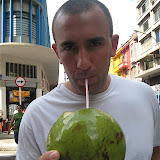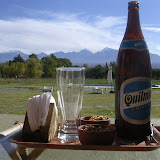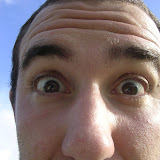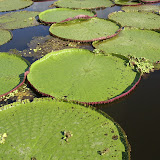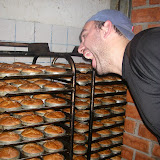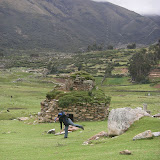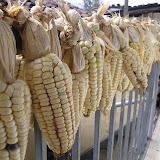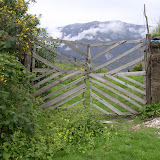In a few conversations with Brazilians that I´ve had in other countries and in the time I´ve spent here, I´ve noticed a pattern: they have an almost pathological inability to admit that Brazil has any problems. According to them, every other country in South America is struggling, and the U.S. is really in deep shit and full of bastards, but things in Brazil are just fine. So in an effort to continue the process of understanding, allow me to issue another set of translations.
-- Brazilian statement: ``We have the most beautiful women in the world, and all of our residents in general take great care of their bodies.´´
-- My perception: Either these people are smoking crack or there is some kind of hallucinogen in one of the countless weird, yet definitely tasty, types of fruit that Brazilians eat. I cannot begin to tell you how disappointed I am with the quality of the women. Simply put, they´re nothing special at all. Sure, you occasionally see some really good-looking women here, but most, in fact, are not really all that attractive. In fact, many are overweight or otherwise appear unhealthy. The women in Chile were better, as they were in Argentina, where some of the women were some of the most gorgeous I had ever seen.
Brazil, you see, has the diversity -- in fact, next to the U.S., it most likely is the world´s most diverse country -- but it´s standard of living is shit because of the immense gap between rich and poor. I haven´t gone to the beach yet, and I´m sure there will be some gorgeous women there. But, hell, there are gorgeous women on any beach.
As for people´s really taking care of their bodies here, it´s nonsense. There are plenty of sloppy-looking people here, just as there are in the U.S.
It´s really rather ridiculous how people, instead of thinking for themselves, just continue to buy what others tell them and continue to repeat the same lies, half-truths and exaggerations.
-- Brazilian statement: ``We have no racism in Brazil. Everyone gets along fine here.´´
-- My perception: There is a kernel of truth here, but it´s a half-truth at best. It is much more common to see interracial couples around here, and I see many more mixed-raced people hanging around together than I do in the U.S. So, at least on a personal level, some of that may be true.
However, the racism here is more structural. As a percentage of the population, blacks are far more likely to live in favelas -- slums, that is -- than are their white counterparts. They also are far less likely to get a decent education or find a good job. No country -- and this certainly includes the U.S. -- can claim a lack of racism when these situations exist.
And while we´re on the subject of race, let me say this. I was told by many people before I came here that, being white, I would stick out. This is absurd. Here is the reality -- according to the official stats, the majority of Brazil´s population is white, as is the vast majority of the population in Argentina and Uruguay, and possibly Chile. There simply is no shortage of white people in South America. The only thing that might make me appear like less of a Brazilian is my manner of dress, but even that isn´t completely true because people dress so differently here.
-- Brazilian statement: ``Brazilian food is excellent.´´
-- My perception: Next to the food in China, Brazil has the worst food I have eaten, and this seems to be an opinion that is shared by many foreigners around me. There are three main problems. One, everything is salted to absolutely outrageous levels. It´s so bad that the Brazilians don´t even recognize it. In fact, many of them continue to douse their food with salt even after it´s been more than generously salted. Two, the quality of the ingredients is very, very low. The meat is fatty and tough, the sausage is cheap, many of the vegetables are rotten. There´s simply no attention to detail. Three, nearly everything is overcooked. I ate pasta today that was falling apart as I was sticking my fork into it. It was foul.
I really am not looking forward to my next Brazilian meal. I´ve got to find ethnic restaurants here.
-- Brazilian statement: ``The people who lives in favelas have good lives. They want to be there because they have no worries. They live better than you and me.´´
-- My perception: Two people have given me variations of this statement, and I felt like decking both of them. You´ve got to be a first-class piece of shit to say something like that. I have yet to take a favela tour, which I will do so soon, but these places look absolutely awful.
A favela basically is a large slum. Until I arrived here, I had no idea how large. When you first come into Rio, it is absolutely shocking to see how expansive they are. There is a favela right outside of the my hostel. Many residents there have problems accessing fresh water and electricity. They are in constant danger because they frequently get caught in the crossfire between the vicious battles fought by police and drug dealers. In fact, the general consensus seems to be that they are at greater risk to be killed by the police than by drug dealers.
In the 1990s there was an incident in Rio in which police, angered by some kind of a confrontation with a teenager in which a cop was injured, stormed a place at which they knew many favela teenagers hung around, and shot everyone in there, killing at least 15 kids. Apparently the response of many Brazilians was nonchalant, and no cop was reprimanded.
These are the kind of conditions people in the Favela must face, in addition to the fact that many kids who grow up there do not have access to health care or schools.
-- Brazilian statement: ``Brazil is the greatest country in the world.´´
-- My perception: I thought only Americans made absurd statements of this nature, but the Brazilians are much, much worse. In fact, they´ll gladly recite to you the littany of problems that the U.S. has -- shortly before they tell you they´ve never actually been to the U.S. -- but ignore all of their own. To fail to believe there is a problem in your country is to not do anything to improve conditions. As a society, much of Brazil simply does not work. Although I detested Sao Paulo, I like Rio because it amuses me. And yet it´s obvious how horribly dysfunctional this place is.
This is a country with one of the worst gaps between rich and poor in the world. Brazil is heavily industrialized and rich in natural resources. Yet one would never know it by looking at the population. The country has major environmental problems. Its rainforests are disappearing at shocking rates, and there is no slowdown. The government is not committed to slowing down the poachers who are responsible for much of the logging because officials have committed so little money to enforcement. According to one talk I had with an Australian guy who was an environmental expert who has spent the past several months working down here, Brazil had hired only five people to enforce environmental regulations in an area that amounted to something like one-sixth of the country. And bear in mind that Brazil is huge -- about the size of the continental U.S. The police corruption out here is categorically ludicrous. Not a single person I have spoken to has any faith in the police. Some fear them more than they do criminals.
People are struggling here, and yet the population here seems hesitant to discuss it and instead would rather march around in their yellow and green shirts with ``Brazil´´ logos on them and talk about what a great place this is. What makes all of this so sad is that Brazil really could be a great place -- one of the greatest in the world. It has so much natural beauty, so much wildlife, so much resource wealth, so much potential, so much size, so many young people, so much culture. And yet so much is being wasted and squandered and unfairly distributed.
Igor
 I have found Paradise. Belinda Carlisle was right, heaven is a place on earth and its called ¨Ilha Grande.¨ The island is 60 miles by 30 miles, has 3000 foot mountains, fewer than 4000 people, and no cars. The pictures you see are not enhanced. This is really how it looks here. All the Brazilians that I have met call this the most beautiful place in Brazil, and they were not kidding. A guy working at my hostel came here for two days and has ended up staying 7 weeks. While I won´t be here that long, I will be here longer than anticipated...
I have found Paradise. Belinda Carlisle was right, heaven is a place on earth and its called ¨Ilha Grande.¨ The island is 60 miles by 30 miles, has 3000 foot mountains, fewer than 4000 people, and no cars. The pictures you see are not enhanced. This is really how it looks here. All the Brazilians that I have met call this the most beautiful place in Brazil, and they were not kidding. A guy working at my hostel came here for two days and has ended up staying 7 weeks. While I won´t be here that long, I will be here longer than anticipated...





